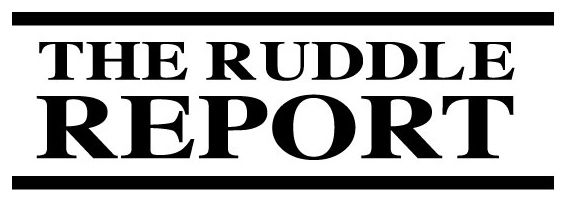
Carrier-Based Obturation & GuttaCore
Well, I hope some of you are sitting down. Others will probably dance. But, I have to talk today… I want to talk today about carrier-based obturation because I have good news.
Okay, for those of you sitting down, let me give a brief history. Some of you may be quite surprised that Cliff Ruddle is talking about carrier-based obturation. So, I probably ought to give a brief perspective.
Dentsply Tulsa Dental Specialties was a company that was originally started in 1988 and at that time they were called the Thermafil company and their single product was Thermafil. Thermafil can be thought of in that era as what we call today carrier-based obturation. When Thermafil came out, it was accepted by many dentists. It was rejected more or less uniformly by all endodontists because the stigma was we were leaving behind a polysulfone carrier inside a finished shaped and obturated canal. Endodontists didn’t really like the carrier left behind for a variety of reasons. One of them would be, as an example, in the retreatment situation, the perception was that it was more difficult to remove. And, of course, if we have a tooth that over time, the restoration fails, the restorative dentist may deem it necessary or required to place a post prep, in which case there was a carrier in the way.
So, for these reasons and others, there became two camps. Largely those who despised carrier-based obturation and those who loved it, embraced it, and actually performed it. I was one of those, back in this era, 1991, ’92, ’93, who did not like carrier-based obturation, did not endorse it, and actually was quite vocal on stage and in articles regarding carrier-based obturation.
Well, I had to change my attitude as the years progressed because more and more science came out showing, very clearly, that root canal systems could be excitingly filled in all their dimensions with a very easy obturation method, carrier-based. The problem though was, many of us in that era weren’t aspiring to good shaping habits and so the under-prepared canals led to abuse. What this means is when we slide a thermosoftened alpha gutta percha through curvatures, and if the canal is under-prepared, oftentimes gutta percha got wiped off the carrier and the carrier arrived nude in its terminal extent.
So, because of this, shaping was emphasized and of course as rotary grew up and grew legs, the shapes became more consistent for all dentists who were aspiring to great shapes. As the shaping improved, logically the disinfection improved as well. These more tapered shapes were very conducive to syringing in sodium hypochlorite, the exchange of our reagents was more profound and of course, we cleaned better into the deep lateral anatomy. Of course, this just accommodated the technique known as carrier-based obturation.
So, shaping was very important to help carrier-based obturation become a viable clinical technique. So, over time I changed my opinion to where in recent years I actually promote the technique, I teach the technique in all my Santa Barbara based courses. And, of course, many colleagues leave the courses excited about using warm gutta percha.
Well, still, many endodontists refuse to use carrier-based obturation, are quite vocal about it, and this is unfortunate because many of these same endodontists are using a cold lateral condensation method for obturation, whereas the colleagues they serve, their referral base, many of them are actually trying to fill root canal systems. So, rather than make them wrong, as specialists, what we should be doing is encouraging our general dentist friends to aspire to shaping methods that promote disinfection and obturation.
What we notice in well-shaped canals that carriers are not only easy to place, they’re easy to remove. And, I would refer anybody to my "Ruddle on Retreatment" tapes, discs if you will, depending on the year you purchased them, because in those discs I give multiple methods for removing carrier-based obturators. So, I don’t really feel that we should use the retreatment situation as the compelling reason for not embracing a marvelous obturation technique.
Now I bring you the good news. In the future, I’m thinking 2011, you will find a new carrier-based obturation method appear on the market and it will be distributed by Dentsply Tulsa Dental Specialties, again showing leadership in creating solutions for clinical practitioners. What you’ll find is a material called GuttaCore.
GuttaCore will not have the polysulfone carrier. It will have an internal core of cross link gutta percha which means the outer surface of the cross link gutta percha will have alpha gutta percha, like you’re accustomed to if you actually use a carrier-based obturation method from Dentsply Tulsa Dental Specialties.
This will give us a sandwich of gutta percha. We’ll use the oven. We’ll warm it up. The carrier will be delivered in one, two or three seconds. And, at the conclusion of obturation, we will not have the stigma of a plastic carrier. GuttaCore promises to be an excellent and exciting obturation method in the future.
My prediction is: many, many general dentists will embrace this technique because it is quick, it’s three dimensional and it’s going to be easy to use with no stigma of the carrier.
Listen carefully. I also predict that many endodontists, maybe not initially but with a little bit of time, will rapidly embrace this technique because it is, as said before, very three dimensional and there’s no carrier left behind.
So, you can begin to see, there’s been many innovations that have been coming. This is just one of them and the future is very bright for obturation with GuttaCore just around the corner.



